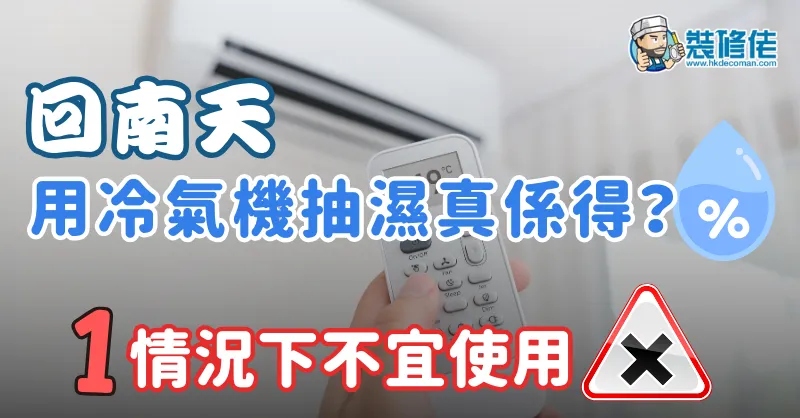Can Air Conditioners Replace Dehumidifiers?
Listen to the blog audio:

Recently, the weather has been experiencing large temperature differences and high humidity. Many households choose dehumidifiers to deal with the moisture, while others believe that many air conditioners on the market are labeled with dehumidification functions, and turning on the air conditioner can also achieve the effect of dehumidification, so why bother buying a separate dehumidifier? In reality, can air conditioners truly replace dehumidifiers?
Air ConditionerDehumidification Principle
Simply put, the dehumidification function of an air conditioner operates based on its cooling process. When it is running, it draws in indoor air and cools it through the cooling system. During this process, the moisture in the air condenses into water, which is then drained outside through a pipe. As a result, the indoor humidity level is reduced.

Pros and Cons of Using Air Conditioners for Dehumidification
Pros
Dual Functionality: Air Conditioners not only cool the air but also dehumidify simultaneously, saving the cost and space required for a separate dehumidifier.
Ideal for Humid and Hot Environments: During humid and hot seasons, the dehumidification effect of air conditioners is more noticeable, effectively reducing indoor humidity and creating a comfortable living environment.
Automatic Drainage: The condensed water from air conditioners is automatically drained, eliminating the need for users to manually empty water containers, which is relatively convenient.
Cons
High power consumption: Air conditioners typically consume more electricity than dedicated dehumidifiers when running, leading to increased electricity bills with prolonged use.
Limited dehumidification effect: Air conditioners can only remove about 20% of the moisture compared to dehumidifiers, making them ineffective in extremely humid environments.
Affects indoor temperature: During spring and autumn, using an air conditioner for dehumidification may make the room too cold, reducing comfort.
Narrow dehumidification range: Air conditioners are usually installed in fixed locations, limiting their dehumidification range and making them less ideal for whole-house moisture removal.
Impact on Component Lifespan: Prolonged use of air conditioners for dehumidification increases the load on the components, potentially shortening their lifespan.
Air ConditionerCannot Fully Replace a Dehumidifier
Although an air conditioner has some dehumidifying capabilities, it cannot fully replace a dehumidifier. A dehumidifier is specifically designed for moisture removal, with automatic controls based on indoor humidity levels to ensure consistent and stable dehumidification. On the other hand, an air conditioner's primary function is temperature regulation, and its dehumidification is merely a byproduct with limited effectiveness. In terms of flexibility, dehumidifiers are usually designed as portable devices that can be easily moved to different areas for moisture removal. In contrast, an air conditioner is installed in a fixed location, making its dehumidification effect limited in areas beyond its reach. Additionally, air conditioners consume significantly more electricity, and the long-term costs of usage and maintenance often exceed those of a dedicated dehumidifier. From an economic standpoint, purchasing a dehumidifier is a more reasonable choice.
When not to use air conditioners for dehumidification
The greater the temperature difference between the indoor temperature and the air conditioner setting, the better the dehumidification effect! Therefore, during the cold winter months, indoor temperatures are generally lower. To use an air conditioner for dehumidification, you would need to set the air conditioner temperature even lower than the indoor temperature to achieve a dehumidifying effect. This not only consumes more electricity but also makes the indoor environment even colder.

Consumer Council: Using Air Conditioner's Dry Mode for Dehumidification Can Save Electricity
The Consumer Council points out that if users find dehumidification more important than cooling, they can use Dry Mode to save electricity.
The principle of "Dry Mode" (Dehumidification Mode) is to set the air conditioner's fan and compressor to operate at low speed, reducing the airspeed to increase the time air flows through the cooling system, thereby improving the condensation effect of moisture. This reduces the relative humidity indoors while maintaining a comfortable indoor temperature and lower power consumption. The Consumer Council notes that this operating method can effectively achieve the purpose of dehumidification without the need for strong cooling, thus realizing the triple effect of "dehumidification, cooling, and energy saving."
Therefore, for example, during spring when the weather is not too hot, if the user's main need is dehumidification rather than cooling, using Dry Mode would be an efficient and economical option.
【Editor's Picks】
【Anti-Humidity Material Selection Guide: Plastering Edition】When Walls Start to Mold During the Humid Season, the Real Culprit Might Actually Be...
[Smart Toilet Buying Guide] Debunking Two Major Online Shopping Misconceptions, Plus Three Smart Buying Tips!
Learn more about renovation quotes for different property types for free:
Public Housing|https://decoman-publichousing.com/
Private Housing|https://decoman-privatehousing.com/
New Properties|https://decoman-newproperties.com/
Tenement Buildings|https://decoman-tenement.com/
===============================================
The content and images of this article are provided by columnist Renovation Man.









